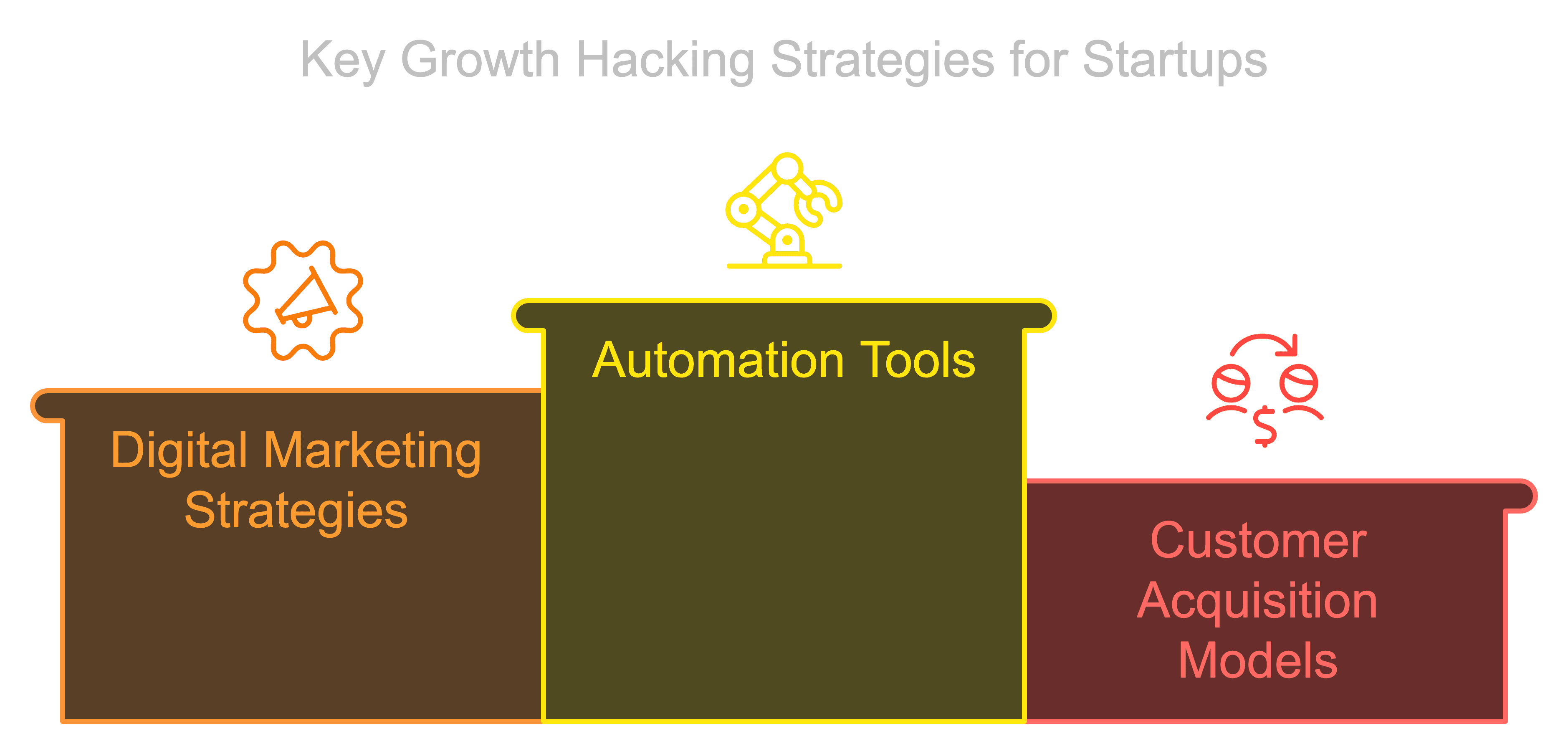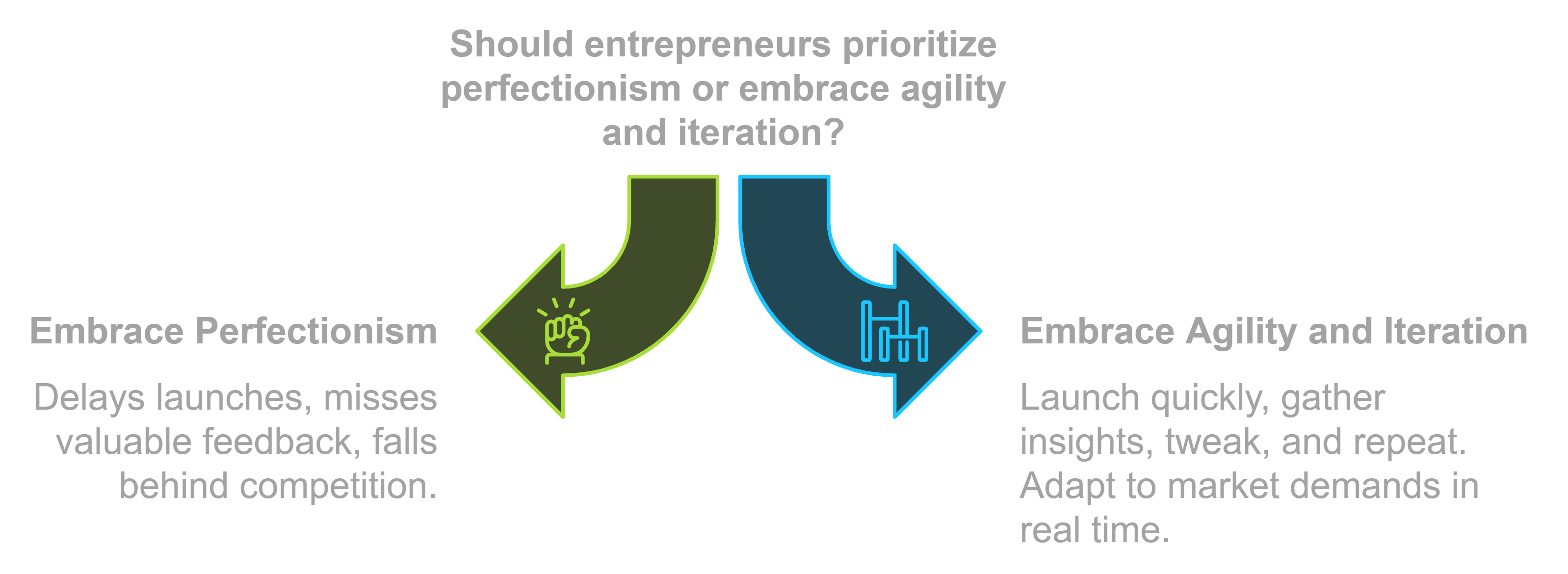September 18, 2024
Tech-Driven Growth: How Startups Are Scaling Fast
If you’re part of a startup or just interested in how companies go from zero to hero in a short span, you’ve probably come across the term growth hacking. It’s not just another buzzword—it’s a critical approach for startups looking to scale efficiently. In 2024, startups are using a mix of automation tools, smart digital marketing strategies, and creative customer acquisition models to fuel their growth. But what does this all mean, and how do these strategies actually work? Let’s break it down.
Automation Tools: Taking the Repetitiveness Out of Work
Imagine running a startup and juggling sales, marketing, and customer service—all at the same time. Sounds exhausting, right? That’s where automation tools come in. They’re designed to take the repetitive tasks off your plate, letting you focus on what really matters—growing your business.
Let me give you a few examples:
Zapier: Think of Zapier as the glue that connects all your apps. It’s like the backstage crew, automating the behind-the-scenes stuff. Say you want your new website inquiries to automatically get logged into your CRM, added to an email list, and trigger a Slack notification. You can set all that up in minutes without lifting a finger afterward. Trust me, it’s a lifesaver when you’re short on time but need things running smoothly.
Apollo.io: If your startup relies heavily on sales outreach, Apollo is your secret weapon. It automates everything from email campaigns to lead generation. I’ve seen startups go from scattered manual processes to a streamlined sales funnel thanks to Apollo’s automation, letting their teams focus on closing deals rather than tracking down leads.
Activepieces: Never heard of it? Well, you’re going to love this one. Activepieces is an open-source alternative to Zapier, offering customizable workflows between apps. It’s perfect if you prefer open-source solutions and want something flexible to match your growing business needs. It’s gaining traction fast because it allows for seamless internal automation without heavy subscription costs.
AI SDR (Sales Development Representatives): Here’s where things get futuristic but exciting. Imagine automating parts of your sales development process with AI. AI SDRs can send out personalized emails, follow-ups, and even qualify leads without human intervention. Tools like Exceed.ai are doing this right now, helping startups scale their sales teams without breaking the bank.
Digital Marketing Strategies: Growing Your
Now that you’ve got automation running in the background, it’s time to bring in the customers. But here’s the thing: digital marketing isn’t just about throwing ads at people anymore. It’s about building connections, engaging content, and organic growth.
One of my favorite approaches is content marketing. Have you ever noticed how some startups always seem to pop up with helpful blogs or videos just when you need them? That’s no accident. They’re using content to answer questions, solve problems, and build trust with their audience. Whether it’s writing blogs, creating infographics, or even recording podcasts, they’re keeping people engaged and improving their SEO rankings in the process.
Then there’s SEO optimization itself. I know, SEO can feel like a mystery at times, but it’s one of the most important tools for making sure people find your startup online. And when you pair that with tools like Ahrefs or SEMrush, you can stay on top of keyword trends and make sure your content hits the mark.
Finally, let’s talk about influencer marketing. You’ve probably noticed that startups are collaborating more with influencers. And why not? Influencers can help get the word out to the right people quickly. Just imagine how much faster you can grow when someone with a huge following gives your product a shoutout.
Innovative Customer Acquisition Models: Thinking Outside the Box
Getting customers through the door is tough, especially when you’re just starting. But tech startups are getting creative with customer acquisition models, and it’s paying off.
One of the best examples out there is referral programs. We’ve all seen them—"Refer a friend and get X discount or reward." It works because it leverages the power of your existing customers to bring in new ones. Dropbox nailed this strategy early on, and it helped them explode in growth.
Another popular model is the freemium approach. This strategy lets potential customers use a basic version of your product for free while keeping the premium features locked. It's an awesome way to get people hooked before they commit to a paid version. It’s the reason companies like Spotify and Slack have been able to grow their user base so quickly.
Finally, don’t underestimate the power of community building. Platforms like Slack and Discord thrived because they didn’t just sell a product; they created communities. Users who feel part of a community are more likely to stay loyal and spread the word. It’s a great way to grow through engagement and word-of-mouth.
The Importance of Email Warmup for Outreach
Before diving into those massive email marketing campaigns, let’s talk about something essential but often overlooked: email warmup. When you’re sending emails from a new domain or scaling up cold outreach, you need to make sure your emails actually land in your recipient's inbox, not the spam folder.
Here’s where tools like Warmbox.ai and Lemwarm come in handy. They gradually increase your email sending volume, improve engagement rates, and keep your domain reputation high. This process is vital for making sure your emails don’t get blacklisted or flagged as spam.
Data-Driven Decisions: Growing Through Insight
If there’s one thing that separates successful startups from those that struggle, it’s the ability to make data-driven decisions. Gone are the days of guessing what works. Now, you can use tools like Google Analytics or Mixpanel to track user behavior and adjust your strategies accordingly.

Final Thoughts: Growth Hacking Is the Future of Startup Success
Growth hacking is all about working smarter, not harder. By using tools like Zapier, Apollo, Activepieces, and AI SDRs, startups are automating the mundane and focusing on creative strategies that bring in customers and scale their businesses.
But here’s the most exciting part—growth hacking is not just about quick wins. It’s about sustainable, scalable success. The startups that embrace these strategies, experiment with new models, and continuously adapt to customer feedback are the ones that will thrive.
So, what do you think? Have you tried any of these tools or strategies before? How did they work for you? Let me know in the comments, and feel free to share your own growth hacking tips. I’d love to hear about your experiences!






